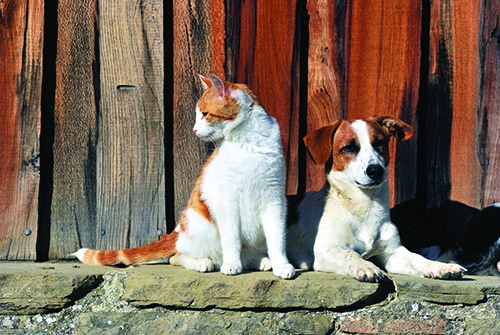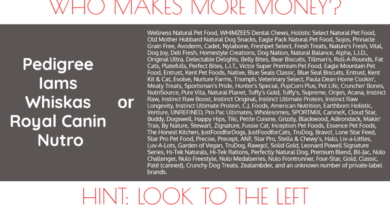Counter-Conditioning and Desensitization (CC&D) – Whole Dog Journal
Counter-conditioning and desensitization (CC&D) involves changing your dog’s association with an aversive or arousing stimulus – in this case, another animal – from negative to positive.
The easiest way to give most dogs a positive association with something is with very high-value, really yummy treats. I like to use chicken – frozen strips (thawed), canned, baked, or boiled, since most dogs love chicken and it’s a nutritious, low-fat food.
Here’s how you would use the CC&D process to change your dog’s association with an animal he found aversive or arousing. Make sure the other animal is in a cage, crate, or on a leash, so you can control his movement.
Let’s imagine that we are working with a dog and a cat in a carrier.
1. Determine the distance at which your leashed dog can be alert and even wary in the presence of the cat but not extremely fearful or aroused. This is called the “threshold distance.”
2. With you holding your dog’s leash, have a helper present the cat in the carrier at your dog’s threshold distance. The instant your dog sees the cat, start feeding bits of chicken to your dog. Pause, let him look at the cat again, feed him again. Repeat as long as the cat is present.
3. Continue alternating the pausing and feeding bits of chicken to your dog. After several seconds, have your helper remove the cat. As soon as the cat is out of your dog’s view, stop feeding him the treats.
4. Keep repeating steps 1 through 3 until the presentation/appearance of the cat at your dog’s original threshold distance consistently causes your dog to look at you with a happy smile and a “Yay! Where’s my chicken?” expression. This is what we call a conditioned emotional response (CER); your dog’s association with the cat at his original threshold distance (let’s call it “X”) is now positive instead of negative.
5. In the next few steps, you need to increase different aspects of the intensity of the stimulus, making sure to get and/or maintain the desired CER from the dog at decreasing distances. What?! How do you increase the intensity of a cat?
For a dog who is aroused by the sight of a cat, the least intense presentation of a cat is what you’ve been using so far: a single cat in a carrier. To increase how stimulated your dog is by the cat, you might open and close the door of the cat’s carrier, so your dog can see the cat more clearly. You could also bring in another cat in another carrier. If your cat is confident and won’t immediately try to leave the scene, you could let her out of the carrier – or, to take this to a stimulating extreme, have your helper invite the cat to play with a toy. Each of these things will be a more intense stimulus for your dog.
Back at your dog’s original threshold distance, start increasing the intensity of one aspect of the cat’s presentation while you decrease the distance between your dog and cat in small increments. Achieve the desired CER (with a happy “Where’s my chicken?” expression) at each distance, until your dog is calm very near the cat, perhaps even sniffing or targeting (touching with his nose on cue) the cat’s carrier. Then move away from the cat.
If your dog starts to get overstimulated, fixated on the cat, not taking your treats (or taking them with a “hard” mouth), you are moving too fast. Increase the distance between the cat and the dog, and/or decrease the intensity of the cat (back into the carrier!).
6. Return to your dog’s original threshold distance and increase the intensity of the cat in some different way, gradually decreasing the distance between your dog and the cat and attaining the desired CER along the way, until your dog is delighted to have the cat in relatively close proximity. A loose cat, a playing cat, a meowing cat, two cats . . . Keep working until your dog maintains his relaxed, happy, “Where’s my chicken?” look throughout each of these cat presentations, even at a close range to the cat. He should now think of the cat as a very good thing – a reliable predictor of very yummy treats.
7. If appropriate, you can gradually work up to actual interaction with the cat or cats at this stage. If not appropriate, don’t! Don’t push your dog “over threshold” – the point at which the cat (or other animal) is too exciting for him and he loses his composure. The rule for effective CC&D is “Go slow – and then slow down!”





